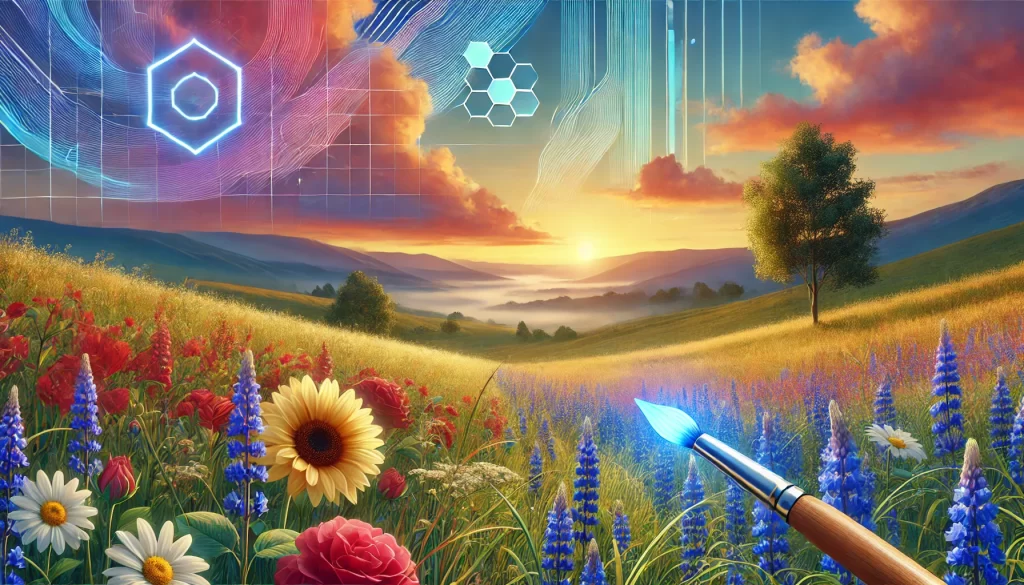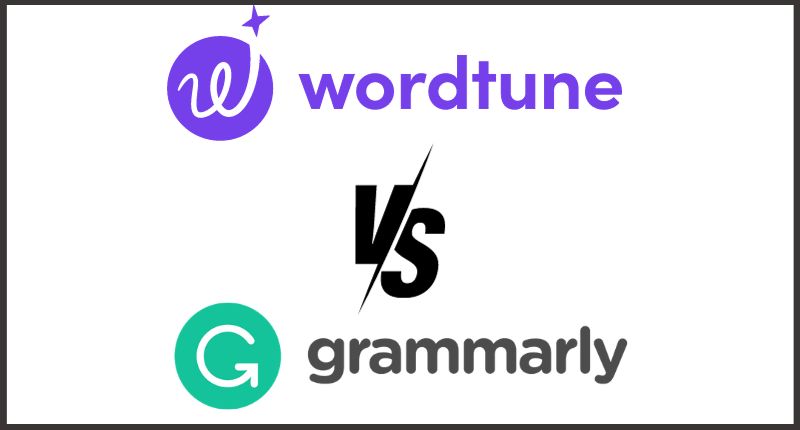In recent years, artificial intelligence (AI) has revolutionized many industries, and the world of digital art is no exception. One of the most exciting AI tools in this space is DALL-E 2, a powerful image generation model developed by OpenAI. DALL-E 2 allows users to generate stunning and highly detailed artwork simply by providing text prompts, and it’s gaining popularity among artists, designers, and creative professionals for its ability to create beautiful, imaginative, and sometimes surreal images with minimal effort.
In this blog post, we will dive into how you can use DALL-E 2 to create stunning artwork. Whether you’re an artist looking to explore new possibilities, a designer seeking inspiration, or a curious tech enthusiast, this guide will walk you through the process, tips, and techniques to maximize your results. Let’s explore How to Generate Stunning Artwork Using AI Tools Like DALL-E 2: A Comprehensive Guide
What is DALL-E 2?
DALL-E 2 is an advanced AI model developed by OpenAI that can generate high-quality images based on textual descriptions. It is the successor to DALL-E, which was introduced in 2021. Unlike traditional image creation methods, where an artist must manually create every detail, DALL-E 2 leverages deep learning algorithms to understand the intricacies of the text and translate it into vivid, often surreal, visual representations.
The model is based on a concept known as CLIP (Contrastive Language-Image Pre-training), which allows the AI to align textual prompts with image content in a highly efficient manner. DALL-E 2 can not only generate realistic images of objects and scenes but also create entirely new visual concepts that blend elements in ways that human artists might not easily think of.
Key Features of DALL-E 2:
- Image Generation from Text: Create images from natural language descriptions.
- Inpainting (Editing): Modify existing images based on new prompts or changes in the scene.
- Variations: Generate multiple variations of a single image to explore different creative possibilities.
- Resolution: DALL-E 2 generates images at a higher resolution and with better quality compared to its predecessor.
- Creativity: The model is known for its ability to generate images that combine objects or concepts in unexpected and highly creative ways.
Getting Started with DALL-E 2: Step-by-Step Guide
Now that you understand what DALL-E 2 is, let’s explore how to use this tool to generate stunning artwork. Whether you’re using DALL-E 2 for personal projects or professional creative work, the process is relatively straightforward.
Step 1: Accessing DALL-E 2
Before you can start generating artwork, you’ll need access to DALL-E 2. As of now, DALL-E 2 is available through OpenAI’s platform, which requires you to sign up for an account. You can access it either via their web interface or through an API for more advanced integrations.
- Sign Up or Log In: Go to the OpenAI website and create an account if you haven’t already.
- Explore the Pricing Options: OpenAI offers various pricing models, including free trials and paid plans depending on the number of credits you need for generating images.
- API Access: If you’re a developer or working on large-scale projects, you can access DALL-E 2 via the API. API access allows you to integrate DALL-E 2 with other software tools or workflows.
Step 2: Understanding the Text Prompt
The core functionality of DALL-E 2 is its ability to turn text prompts into images. Therefore, crafting the perfect prompt is essential to getting the best results. Here are some tips on how to write effective prompts:
- Be Specific: The more detailed your description, the more likely the AI will generate the type of artwork you want. For example, instead of saying “a cat,” try “a black cat with yellow eyes sitting on a velvet cushion in a sunlit room.”
- Include Art Styles: If you’re looking for a specific artistic style, mention it in your prompt. For instance, “a landscape painting in the style of Van Gogh” will yield different results than “a realistic landscape.”
- Combine Elements: DALL-E 2 is highly creative and excels at blending different ideas. You can combine unexpected elements like “a futuristic cityscape with ancient ruins” or “a flamingo wearing a tuxedo.”
- Experiment with Abstract Concepts: You can also generate surreal or abstract art by including concepts like “dreamy,” “fantastical,” or “impressionist.”
- Use Adjectives: Adjectives like “elegant,” “gritty,” “vibrant,” or “moody” can help shape the aesthetic of the final image.
Step 3: Generating Your Artwork
Once you have your prompt ready, you can input it into the DALL-E 2 interface. The AI will process the prompt and generate an image in a matter of seconds to minutes, depending on the complexity and resolution. If you’re not satisfied with the result, you can refine your prompt or try generating additional variations.
- Prompt: “A futuristic cityscape with neon lights, flying cars, and towering skyscrapers.”
- Generated Image: DALL-E 2 might produce a highly detailed image of a neon-lit city with futuristic architecture, creating a visually stunning and immersive scene.
Step 4: Refining the Image (Inpainting)
DALL-E 2 offers a feature known as inpainting that allows you to modify parts of an existing image. This is particularly useful if you want to edit a specific section of your generated artwork, such as changing the color of an object, replacing an element, or improving the composition.
- Select the Area: Using the interface, select the area you want to modify.
- Provide a New Prompt: Describe how you want to alter the selected area. For example, “Replace the green tree with a red maple tree.”
- Generate New Image: DALL-E 2 will then modify the image according to your new instructions.
Step 5: Downloading and Using the Artwork
Once you’re satisfied with the image, you can download it in high resolution for use in your creative projects. DALL-E 2 provides downloadable image files, usually in formats like JPEG or PNG, which can be used for websites, graphic designs, presentations, or digital art collections.
Tips for Generate Stunning Artwork Using AI Tools with DALL-E 2
While the process of generating artwork with DALL-E 2 is relatively simple, getting truly stunning and unique results requires a bit of practice and experimentation. Here are some advanced tips to help you get the best possible artwork from this AI tool:
1. Play with Contrast and Lighting
Lighting is a crucial element in visual art, and DALL-E 2 can emulate different lighting conditions based on your prompts. You can specify “soft lighting,” “golden hour,” or “harsh shadows” to change the mood of your image. Experimenting with light and shadow will help you create more dynamic and realistic images.
2. Incorporate Texture and Detail
If you’re looking for a more tactile feel in your artwork, try adding texture to your prompts. Words like “grainy,” “smooth,” “rustic,” or “metallic” can add a layer of depth to your images, making them look more engaging and lifelike.
3. Incorporate Popular Art Styles
DALL-E 2 is capable of emulating famous art styles, such as Impressionism, Cubism, Pop Art, or Surrealism. Mentioning a specific artist or art movement in your prompt can lead to impressive results. For instance, you could say “a surreal landscape in the style of Salvador Dalí” or “a cityscape painted in the style of Claude Monet.”
4. Use Negative Space Creatively
Don’t be afraid to leave parts of your image undefined or blank. Negative space is a powerful artistic tool, and DALL-E 2 can generate minimalist artwork with interesting compositions. Try prompting something like, “A cat sitting in the center of a large empty white canvas.”
5. Experiment with Different Perspectives
Try prompting images from unique perspectives, like “a bird’s-eye view of a forest” or “a close-up of a flower with dew drops.” This can give your artwork a more dynamic and interesting visual appeal.
Applications of DALL-E 2 in Various Industries
While DALL-E 2 is primarily used for creating artwork, it has wide-reaching applications across various industries. Here are some examples:
1. Graphic Design
DALL-E 2 is a game-changer for graphic designers, as it allows them to generate custom imagery quickly and efficiently. Whether it’s for social media posts, product packaging, or branding, designers can use DALL-E 2 to create unique visuals that align with their clients’ needs.
2. Advertising and Marketing
Marketers can use DALL-E 2 to generate eye-catching visuals for advertising campaigns. Whether it’s for creating engaging social media content or conceptualizing new ad visuals, DALL-E 2 provides the flexibility to produce high-quality designs at speed.
3. Game Design and Virtual Environments
For game developers and digital artists, DALL-E 2 offers a unique way to conceptualize and create environments, characters, and objects. Game art and concept design are labor-intensive, but DALL-E 2 can speed up the process, allowing designers to explore different aesthetics rapidly.
4. Education and Learning Materials
Teachers and educational content creators can use DALL-E 2 to generate illustrations for textbooks, online learning modules, or educational presentations. By generating custom images tailored to specific lesson plans or topics, educators can make learning materials more engaging and visually appealing for students.
5. Film and Animation Pre-production
In the world of film and animation, concept art is crucial for pre-production. Directors and designers can use DALL-E 2 to visualize scenes, characters, or entire environments before committing to costly and time-consuming production. Whether it’s for generating initial concept art or exploring visual styles, DALL-E 2 can help streamline the creative process.
6. Art for Merchandising and Product Design
Product designers can use DALL-E 2 to create mock-ups of potential merchandise or product packaging. Whether it’s designing t-shirts, logos, or product prototypes, DALL-E 2 can offer a quick visual representation of design concepts that can be refined and turned into real products.
Ethical Considerations and Limitations of AI-Generated Art
While DALL-E 2 offers incredible potential for generating stunning artwork, it’s important to recognize the ethical considerations and limitations associated with AI-generated art. These include issues surrounding intellectual property, authorship, and bias in AI models.
1. Intellectual Property and Copyright
One of the most debated topics in AI-generated art is whether the artwork created by AI belongs to the creator of the prompt or the AI model itself. As of now, OpenAI allows users to claim ownership of the images they generate with DALL-E 2, but there are still questions around how this applies in cases where the AI’s training data might include copyrighted works. It’s important to be mindful of this when using AI-generated art for commercial purposes.
2. Bias in AI Models
AI models, including DALL-E 2, are trained on large datasets that may include biases present in the data they were trained on. This can sometimes result in images that perpetuate stereotypes or show biases based on gender, race, or other factors. OpenAI has made efforts to reduce these biases, but it’s still important for users to be aware of this issue and strive to create diverse and inclusive content.
3. AI and Human Creativity
There’s an ongoing discussion about the role of AI in creative industries and whether AI tools like DALL-E 2 are replacing human artists or complementing their work. While AI-generated art can produce stunning images, it’s crucial to view these tools as a means of augmenting human creativity rather than replacing it. AI can help artists break through creative blocks, explore new styles, or quickly generate concepts, but the human touch remains irreplaceable in producing truly original and emotionally resonant art.
4. Ethical Use of AI-Generated Images
As with any tool, ethical considerations must also guide the use of AI-generated content. For instance, it’s important to ensure that the AI is not being used to create deceptive or misleading images, such as for deepfakes or malicious content. Ethical AI use should prioritize transparency, accountability, and respect for the rights of others.
Advanced Techniques for Mastering DALL-E 2
To elevate your use of DALL-E 2 and get even more out of the tool, here are some advanced techniques you can explore:
1. Layered Prompting
Instead of writing a single, complex prompt, consider breaking it into layers or steps. For example, you could first generate a background scene (like a beach during sunset), then generate a subject (like a person sitting under a palm tree), and finally ask for additional details (such as adding a specific type of bird in the sky). This approach gives you more control over the composition of the image and can lead to more polished results.
2. Utilize External Image Editing Tools
Once you’ve generated an image with DALL-E 2, you can use external image editing software, such as Adobe Photoshop or GIMP, to refine the artwork further. Whether it’s adjusting colors, enhancing contrast, or adding fine details, combining DALL-E 2’s generative power with traditional image editing can result in more professional-quality artwork.
3. Create a Series of Images
If you’re working on a larger project, like a visual story or a set of illustrations for a book, you can use DALL-E 2 to generate a series of related images. By using consistent prompts with slight variations (for example, different characters, settings, or times of day), you can create a cohesive set of artwork that follows a common theme or visual narrative.
4. Combining Multiple Models or Tools
You can also integrate DALL-E 2 with other AI-powered tools. For instance, you might use a text-to-sound AI like Jukedeck or OpenAI’s Juking to create accompanying soundtracks for your generated artwork or even use AI-driven animation software like RunwayML to animate your static images. This combination of AI tools can help you create fully immersive experiences with both visuals and sound.
Future of AI Art: What’s Next?
As AI continues to evolve, the potential for tools like DALL-E 2 to change the way we create and interact with art will only increase. Here are a few trends we can expect in the future of AI art generation:
1. Higher Resolution and Detail
Future iterations of models like DALL-E 2 are likely to offer even higher resolution outputs and more fine-grained control over details, allowing artists and designers to create images that are more photorealistic or stylistically refined.
2. Real-Time Collaboration
One exciting possibility is the integration of real-time collaboration features, where multiple users can co-create artwork using AI tools. This could be a game-changer for design teams, creative agencies, or even independent artists working together remotely.
3. More Control Over the Creative Process
We may see more advanced interfaces that allow users to control the creative process with even greater precision, such as the ability to directly manipulate elements of the generated images, tweak lighting or perspective, or even create images in 3D.
4. Ethical and Legal Developments
As AI-generated art becomes more ubiquitous, we can expect a growing focus on creating frameworks around copyright, intellectual property, and ethical AI use. This may lead to clearer guidelines for creators and organizations using AI in the arts.
5. Integration with Virtual Reality and Augmented Reality
In the future, AI-generated artwork could seamlessly integrate into immersive experiences like virtual reality (VR) and augmented reality (AR). Imagine walking through a virtual gallery of AI-generated paintings or interacting with AI-created sculptures in a mixed-reality environment.
Conclusion
DALL-E 2 has unlocked new creative possibilities for both artists and non-artists alike, offering a tool that can generate stunning artwork from text prompts. Whether you’re designing graphics, exploring new artistic styles, or simply having fun with the creative process, DALL-E 2 provides an exciting and accessible way to bring your imagination to life.
However, it’s important to approach AI-generated art with awareness of the ethical and creative considerations, ensuring that this tool complements human artistry and contributes to a more inclusive and innovative artistic landscape. By following the tips and techniques outlined in this guide, you’ll be well on your way to mastering the art of AI image generation and creating stunning artwork that pushes the boundaries of creativity.
Start experimenting with DALL-E 2 today and unleash your artistic potential—one prompt at a time!
FAQs: Frequently Asked Questions about DALL-E 2
1. Is DALL-E 2 free to use?
DALL-E 2 offers a free trial with limited credits, allowing users to generate a certain number of images. After that, you can purchase additional credits through OpenAI’s platform.
2. Can I use DALL-E 2 for commercial projects?
Yes, OpenAI grants users ownership of the images they generate with DALL-E 2, which means you can use the artwork for commercial purposes. However, it’s important to review the terms of service for any restrictions or limitations.
3. Can DALL-E 2 create images in a specific style?
Absolutely! DALL-E 2 can generate images in a wide variety of artistic styles. By including specific instructions in your text prompt (e.g., “in the style of Picasso” or “like a watercolor painting”), you can influence the look and feel of the generated artwork.
4. How accurate is DALL-E 2 at interpreting complex prompts?
DALL-E 2 is highly capable of interpreting both simple and complex prompts, but the results depend on the clarity and specificity of your description. Experimenting with different prompts and refining them over time will yield better results.
5. Can DALL-E 2 generate animations?
While DALL-E 2 primarily generates still images, it can be combined with other AI tools to animate the artwork. For example, you could use AI-based animation software to bring your DALL-E 2-generated images to life in a video format.
By mastering DALL-E 2 and experimenting with different prompts, styles, and techniques, you can create extraordinary artwork that pushes the boundaries of what’s possible with AI. Whether you’re a professional artist, a designer, or someone with a passion for creative expression, DALL-E 2 is a powerful tool to explore and innovate with.
Best AI Business Ideas to Explore in 2025: Unlock the potential of artificial intelligence with our curated list of innovative business ideas. Discover how AI can revolutionize industries and create profitable opportunities. Read more here.


